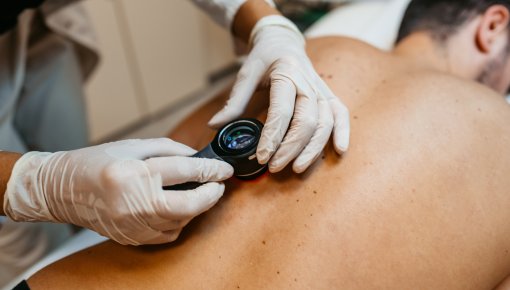Mole, other nevus – or could it be cancer?

Moles and other types of nevus aren’t usually cause for concern. Most skin changes are harmless, and cancer only rarely develops in nevi. But it’s still a good idea to regularly check your skin and look out for warning signs.
Most people have spots or patches on their skin that are a different color to the rest of their skin. These are usually harmless moles, birthmarks or other types of nevus (plural: nevi). But skin changes can also be a sign of melanoma skin cancer.
